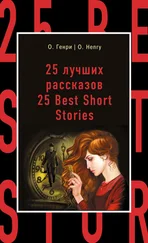‘Tut, tut – not that! I mean, did it ever occur to you on such an occasion, that absolutely you were moving faster than the train? The train passes the telegraph poles at the rate of thirty miles an hour, say. You walk toward the smoking car at the rate of four miles an hour. Then you pass the telegraph poles at the rate of thirty-four miles. Your absolute speed is the speed of the engine, plus the speed of your own locomotion. Do you follow me?’
I began to get an inkling of his meaning, and told him so.
‘Very well. Let us advance a step. Your addition to the speed of the engine is trivial, and the space in which you can exercise it, limited. Now suppose two stations, A and B, two miles distant by the track. Imagine a train of platform cars, the last car resting at station A. The train is a mile long, say. The engine is therefore within a mile of station B. Say the train can move a mile in ten minutes. The last car, having two miles to go, would reach B in twenty minutes, but the engine, a mile ahead, would get there in ten. You jump on the last car, at A, in a prodigious hurry to reach Abscissa, who is at B. If you stay on the last car it will be twenty long minutes before you see her. But the engine reaches B and the fair lady in ten. You will be a stupid reasoner, and an indifferent lover, if you don’t put for the engine over those platform cars, as fast as your legs will carry you. You can run a mile, the length of the train, in ten minutes. Therefore, you reach Abscissa when the engine does, or in ten minutes – ten minutes sooner than if you had lazily sat down upon the rear car and talked politics with the brakeman. You have diminished the time by one half. You have added your speed to that of the locomotive to some purpose. Nicht wahr? [436] ’
I saw it perfectly; much plainer, perhaps, for his putting in the clause about Abscissa.
He continued, ‘This illustration, though a slow one, leads up to a principle which may be carried to any extent. Our first anxiety will be to spare your legs and wind. Let us suppose that the two miles of track are perfectly straight, and make our train one platform car, a mile long, with parallel rails laid upon its top. Put a little dummy engine on these rails, and let it run to and fro along the platform car, while the platform car is pulled along the ground track. Catch the idea? The dummy takes your place. But it can run its mile much faster. Fancy that our locomotive is strong enough to pull the platform car over the two miles in two minutes. The dummy can attain the same speed. When the engine reaches B in one minute, the dummy, having gone a mile a-top the platform car, reaches B also. We have so combined the speeds of those two engines as to accomplish two miles in one minute. Is this all we can do? Prepare to exercise your imagination.’
I lit my pipe.
‘Still two miles of straight track, between A and B. On the track a long platform car, reaching from A to within a quarter of a mile of B. We will now discard ordinary locomotives and adopt as our motive power a series of compact magnetic engines, distributed underneath the platform car, all along its length.’
‘I don’t understand those magnetic engines.’
‘Well, each of them consists of a great iron horseshoe, rendered alternately a magnet and not a magnet by an intermittent current of electricity from a battery, this current in its turn regulated by clock-work. When the horseshoe is in the circuit, it is a magnet, and it pulls its clapper toward it with enormous power. When it is out of the circuit, the next second, it is not a magnet, and it lets the clapper go. The clapper, oscillating to and fro, imparts a rotatory motion to a fly wheel, which transmits it to the drivers on the rails. Such are our motors. They are no novelty, for trial has proved them practicable.
‘With a magnetic engine for every truck of wheels, we can reasonably expect to move our immense car, and to drive it along at a speed, say, of a mile a minute.
‘The forward end, having but a quarter of a mile to go, will reach B in fifteen seconds. We will call this platform car number 1. On top of number 1 are laid rails on which another platform car, number 2, a quarter of a mile shorter than number 1, is moved in precisely the same way. Number 2, in its turn, is surmounted by number 3, moving independently of the tiers beneath, and a quarter of a mile shorter than number 2. Number 2 is a mile and a half long; number 3 a mile and a quarter. Above, on successive levels, are number 4, a mile long; number 5, three quarters of a mile; number 6, half a mile; number 7, a quarter of a mile, and number 8, a short passenger car, on top of all.
‘Each car moves upon the car beneath it, independently of all the others, at the rate of a mile a minute. Each car has its own magnetic engines. Well, the train being drawn up with the latter end of each car resting against a lofty bumping-post at A, Tom Furnace, the gentlemanly conductor, and Jean Marie Rivarol, engineer, mount by a long ladder to the exalted number 8. The complicated mechanism is set in motion. What happens?
‘Number 8 runs a quarter of a mile in fifteen seconds and reaches the end of number 7. Meanwhile number 7 has run a quarter of a mile in the same time and reached the end of number 6; number 6, a quarter of a mile in fifteen seconds, and reached the end of number 5; number 5, the end of number 4; number 4, of number 3; number 3, of number 2; number 2, of number 1. And number 1, in fifteen seconds, has gone its quarter of a mile along the ground track, and has reached station B. All this has been done in fifteen seconds. Wherefore, numbers 1, 2, 3, 4, 5, 6, 7, and 8 come to rest against the bumping-post at B, at precisely the same second. We, in number 8, reach B just when number 1 reaches it. In other words, we accomplish two miles in fifteen seconds. Each of the eight cars, moving at the rate of a mile a minute, has contributed a quarter of a mile to our journey, and has done its work in fifteen seconds. All the eight did their work at once, during the same fifteen seconds. Consequently we have been whizzed through the air at the somewhat startling speed of seven and a half seconds to the mile. This is the Tachypomp. Does it justify the name?’
Although a little bewildered by the complexity of cars, I apprehended the general principle of the machine. I made a diagram, and understood it much better. ‘You have merely improved on the idea of my moving faster than the train when I was going to the smoking car?’
‘Precisely. So far we have kept within the bounds of the practicable. To satisfy the professor, you can theorize in something after this fashion: If we double the number of cars, thus decreasing by one half the distance which each has to go, we shall attain twice the speed. Each of the sixteen cars will have but one eighth of a mile to go. At the uniform rate we have adopted, the two miles can be done in seven and a half instead of fifteen seconds. With thirty-two cars, and a sixteenth of a mile, or twenty rods difference in their length, we arrive at the speed of a mile in less than two seconds; with sixty-four cars, each travelling but ten rods, a mile under the second. More than sixty miles a minute! If this isn’t rapid enough for the professor, tell him to go on, increasing the number of his cars and diminishing the distance each one has to run. If sixty-four cars yield a speed of a mile inside the second, let him fancy a Tachypomp of six hundred and forty cars, and amuse himself calculating the rate of car number 640. Just whisper to him that when he has an infinite number of cars with an infinitesimal difference in their lengths, he will have obtained that infinite speed for which he seems to yearn. Then demand Abscissa.’
I wrung my friend’s hand in silent and grateful admiration. I could say nothing.
Читать дальше
Конец ознакомительного отрывка
Купить книгу












